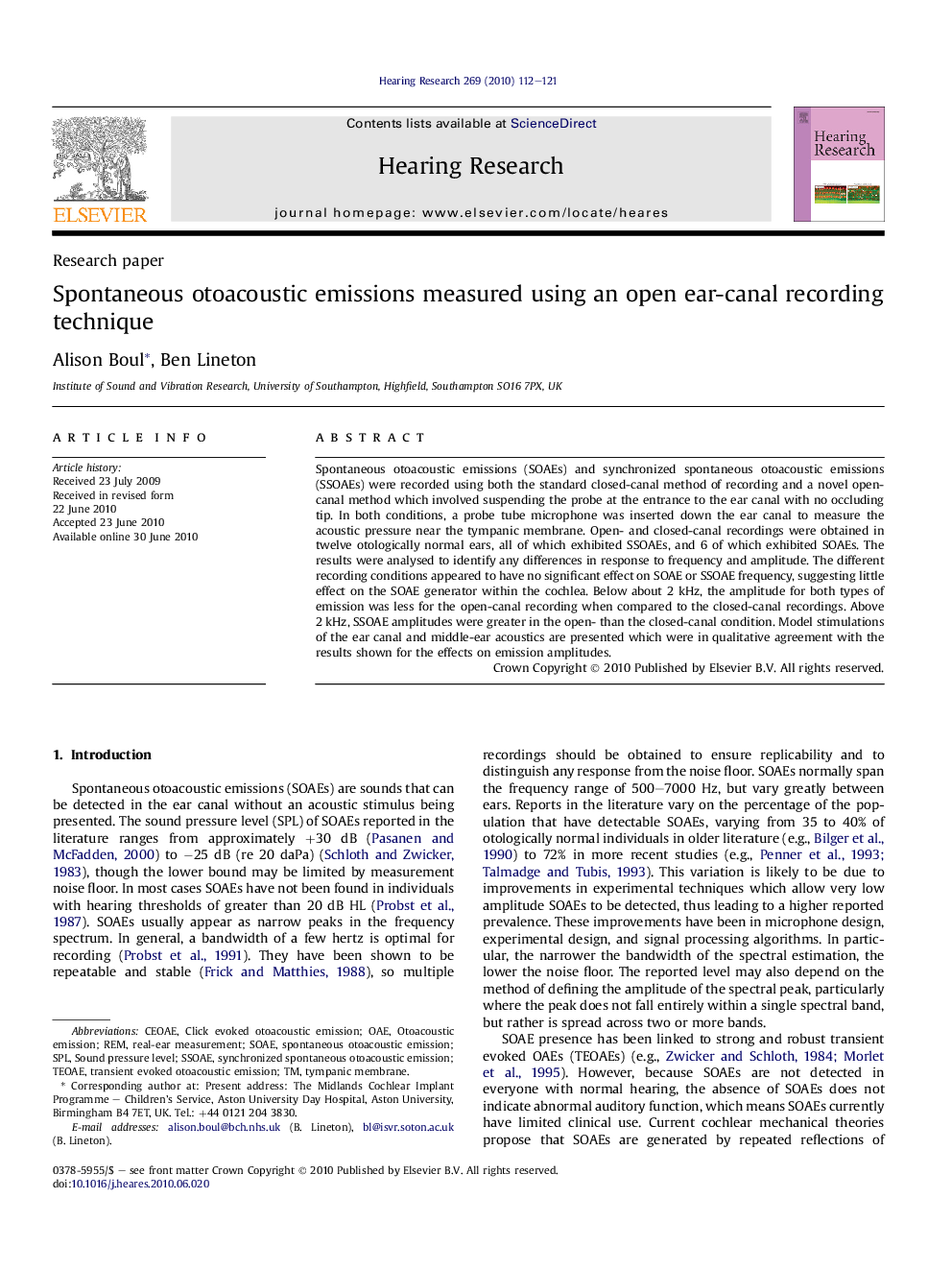| Article ID | Journal | Published Year | Pages | File Type |
|---|---|---|---|---|
| 4355652 | Hearing Research | 2010 | 10 Pages |
Spontaneous otoacoustic emissions (SOAEs) and synchronized spontaneous otoacoustic emissions (SSOAEs) were recorded using both the standard closed-canal method of recording and a novel open-canal method which involved suspending the probe at the entrance to the ear canal with no occluding tip. In both conditions, a probe tube microphone was inserted down the ear canal to measure the acoustic pressure near the tympanic membrane. Open- and closed-canal recordings were obtained in twelve otologically normal ears, all of which exhibited SSOAEs, and 6 of which exhibited SOAEs. The results were analysed to identify any differences in response to frequency and amplitude. The different recording conditions appeared to have no significant effect on SOAE or SSOAE frequency, suggesting little effect on the SOAE generator within the cochlea. Below about 2 kHz, the amplitude for both types of emission was less for the open-canal recording when compared to the closed-canal recordings. Above 2 kHz, SSOAE amplitudes were greater in the open- than the closed-canal condition. Model stimulations of the ear canal and middle-ear acoustics are presented which were in qualitative agreement with the results shown for the effects on emission amplitudes.
Research highlightsSOAE or SSOAE frequency was not significantly affected by the recording method. Below 2 kHz open-canal emission amplitude was less than for closed-canal emissions. Above 2 kHz SSOAE amplitudes were greater in the open than the closed-canal condition.
